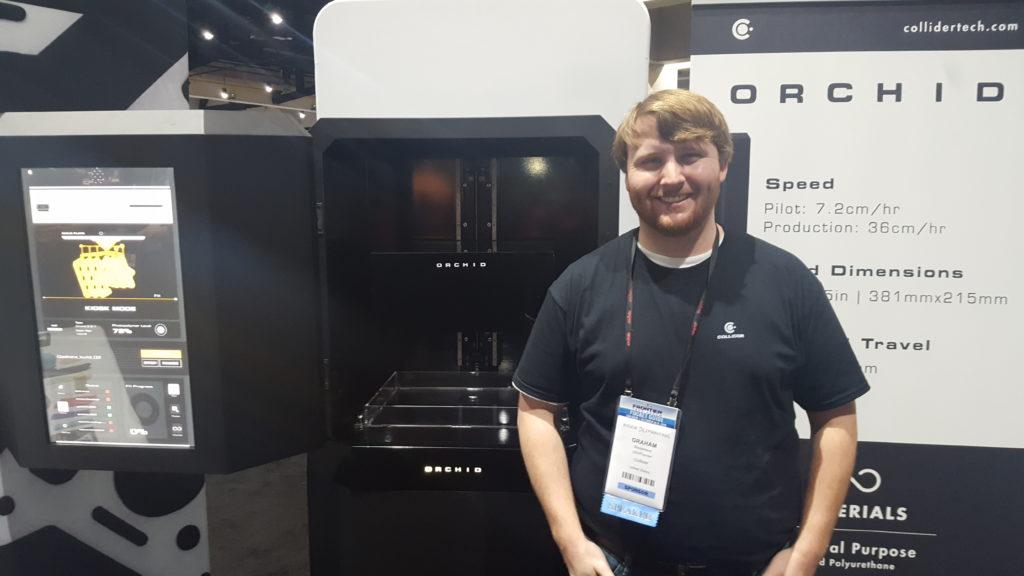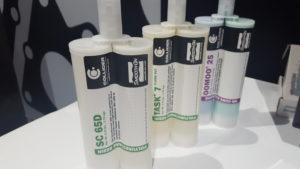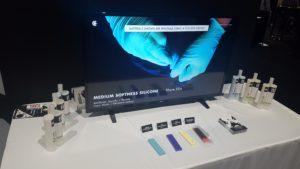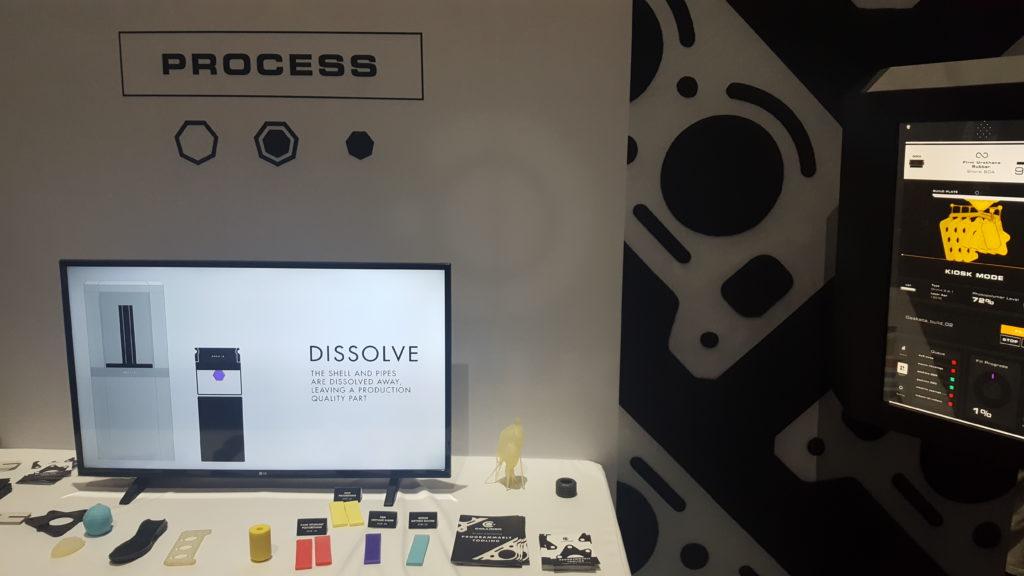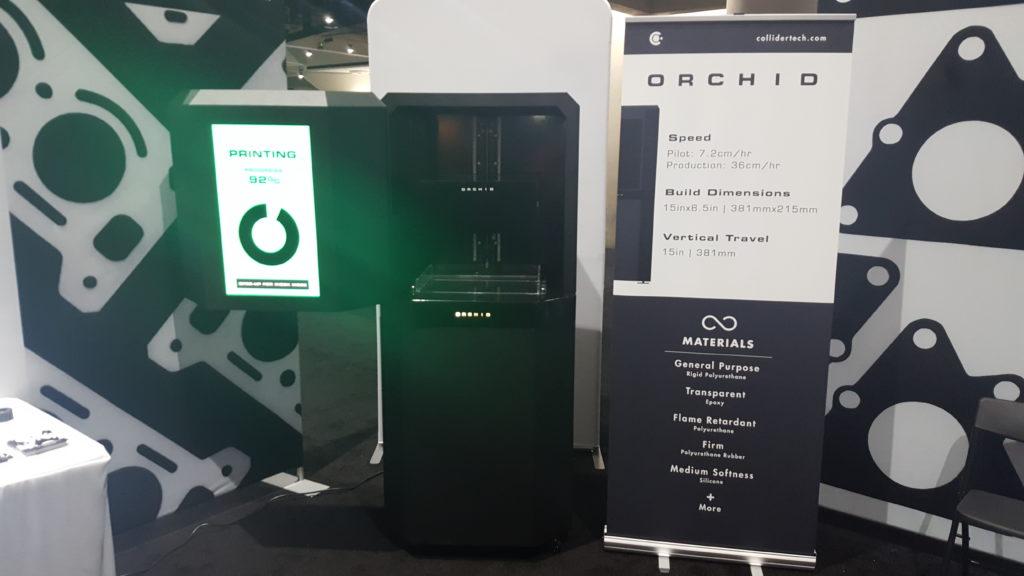Collider Unveiled: Company Emerges from Stealth, Introduces 3D Printing and Programmable Tooling Technology
Nearly a year ago now, we were first introduced to the promising startup Collider, a Chattanooga, Tennessee-based company operating in stealth mode and picking up investments from such big names as Asimov Ventures and the Chattanooga Renaissance Fund. Wednesday at Inside 3D Printing San Diego, the company has officially come out of stealth mode, revealing the details of their new technology that until this point had been a tightly-held secret.
I sat down with CEO and Founder Graham Bredemeyer to find out first hand about the company and their new hybrid technology, introduced yesterday morning and officially dubbed Programmable Tooling.
Collider, Bredemeyer told me, pulls its name from the world-famous Large Hadron Collider, which inspired through its use in proving that light has mass by having collided two photons of light. Light being matter is interesting to anyone with a scientific bent, and is particularly interesting to those in this space with a focus on DLP technologies — in which light is used to give form to matter. Collider brings together technologies through a hybrid approach to tooling, seeking to fill a void and solve a common problem in low-volume manufacturing.
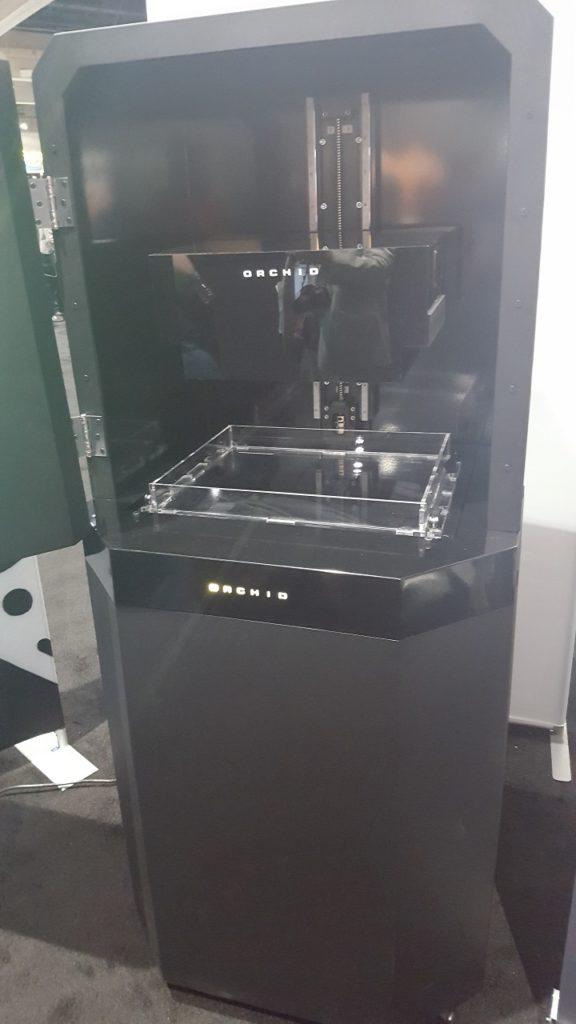 Programmable Tooling, as demonstrated on Collider’s proprietary Orchid machine, is a hybrid technology that brings together the benefits of continuous DLP technology and traditional plastic casting.
Programmable Tooling, as demonstrated on Collider’s proprietary Orchid machine, is a hybrid technology that brings together the benefits of continuous DLP technology and traditional plastic casting.
“Making 1-100 parts is a good path for 3D printing,” Bredemeyer told me, “while for making tens of thousands of products it’s a clear cut application for injection molding. Less clear is making 100 to 1,000 parts. Injection molders will either blow off these volumes or make a $15,000 mold that just ends up being incredibly expensive.”
With focus on low-volume manufacturing, Collider has a lot to bring to the table with their innovative method bringing together accepted technologies that have each already solidified their usefulness in industry. Targeted for use in early and pilot runs in particular, Programmable Tooling from Collider is set for applications requiring low-volume production runs that can benefit from the complex or changeable geometries where 3D printing in particular has shown great value. Their Orchid machine works in a three-step patent pending process:
- Print — The shell and its injection pipes are printed
- Fill — Using the printed injection pipes, the shell is filled
- Dissolve — The shell and pipes are dissolved away, leaving a production quality part
Bredemeyer explains the technology for us:
“We took and combined what we saw as the best parts of 3D printing with the best parts of plastic casting to create a stellar solution for low-volume manufacturing,” Bredemeyer explained.
The system is initially launching with four materials. Nothing about these materials, Bredemeyer underscored, is unique; they are all off-the-shelf materials. Collider is working in a partnership with Smooth-On through a reseller arrangement for supply, starting with these materials:
- General Purpose Rigid Polyurethane (Shore 65D)
- Medium Softness Silicone (Shore 25A)
- Firm Urethane Rubber (Shore 60A)
- Flame Retardant Polyurethane (Shore 73D)
Bredemeyer’s personal favorite of these is the firm urethane rubber, with the flame retardant PU a close second. Collider is starting off with two rigid and two rubber materials now, but has already printed with around 15 materials and will be introducing more and more materials as time goes on and the Orchid is put into further use. The material approval process, he explained, is set to be structured similarly to the Apple app store, with regular quality control checks and relying on third party suppliers rather than creating their own custom two-part materials.
The roll-out plan for Programmable Tooling is two-fold for now, with both options keeping all Orchid machines in-house at Collider’s Chattanooga HQ. The first supply option for the Orchid is to go through 3D Hubs, where Collider has an established hub, and to run a project through the general queue. Alternately, upon inquiry a customer can set up a dedicated lab space at Collider with their own dedicated Orchid machine, allowing for the management of that queue directly. This plan is to be in place for about the next 12 months, though beyond that Collider does plan to ship the machine to customers. They want to allow the “new technology to mature in the nest,” Bredemeyer said, and may begin shipping around mid-2018. As of now, pricing is not being announced.
Collider currently has “a handful” of machines running, and is focusing on fundraising to get more Orchids up and running, especially now that they have gone public with the technology. The company is currently a five-person operation, and is hoping to expand the team in 2017 upon further investment. Present investment in place, in addition to that from Asimov Ventures and the Chattanooga Renaissance Fund, comes from a few angel investors.
The Orchid’s build dimensions are 15 x 8.5 inches (381 x 215 mm), with a vertical travel of 15 inches (381 mm), and speed with a production target of 36 cm/hr and a pilot of 7.2 cm/hr. The machine was named by Collider’s designer, inspired by the rare black orchid — and, as Bredemeyer pointed out, this machine is black and uses ultraviolet technology.
[All photos taken by Sarah Goehrke for 3DPrint.com]“Pricing studies show a significant cost savings,” Bredemeyer noted. “It almost won’t make sense to make silicone molds ever again.”
Subscribe to Our Email Newsletter
Stay up-to-date on all the latest news from the 3D printing industry and receive information and offers from third party vendors.
Print Services
Upload your 3D Models and get them printed quickly and efficiently.
You May Also Like
The Dental Additive Manufacturing Market Could Nearly Double by 2033, According to AM Research
According to an AM Research report from 2024, the medical device industry, specifically in dentistry, prosthetics, and audiology, is expected to see significant growth as these segments continue to benefit from...
Heating Up: 3D Systems’ Scott Green Discusses 3D Printing’s Potential in the Data Center Industry
The relentless rise of NVIDIA, the steadily increasing pledges of major private and public investments in national infrastructure projects around the world, and the general cultural obsession with AI have...
AM Research Webinar Explores Continuum’s Sustainable Metal Additive Manufacturing Powders
Metal additive manufacturing (AM) powder supplier Continuum Powders is working to develop solutions that empower industries to reduce waste and optimize their resources. An independent life cycle assessment (LCA) of...
3D Printed Footwear Startup Koobz Lands $7.2M in Seed Round
California-based Koobz is focused on reshoring the U.S. footwear supply chain with advanced manufacturing processes, including 3D printing. The startup just announced that it has added $6 million to its...


